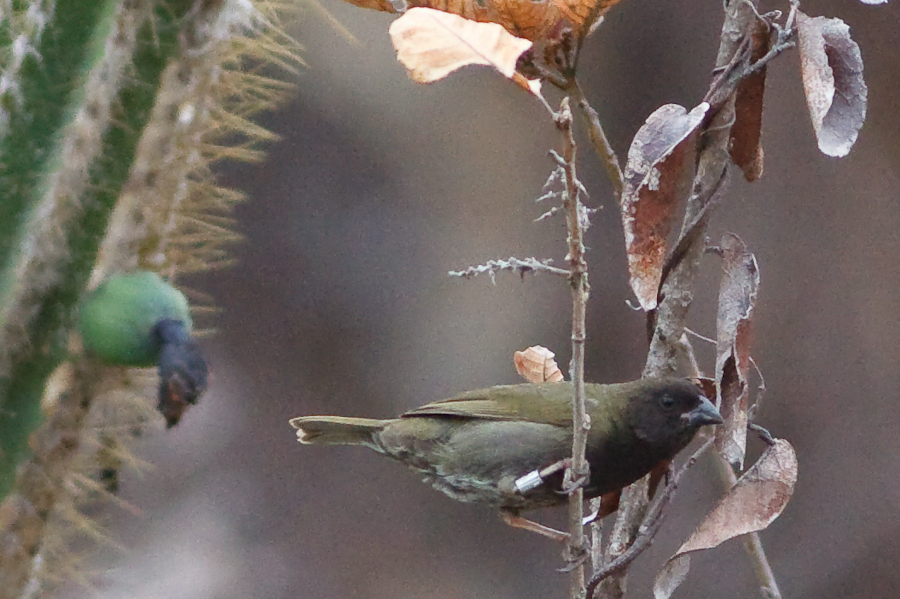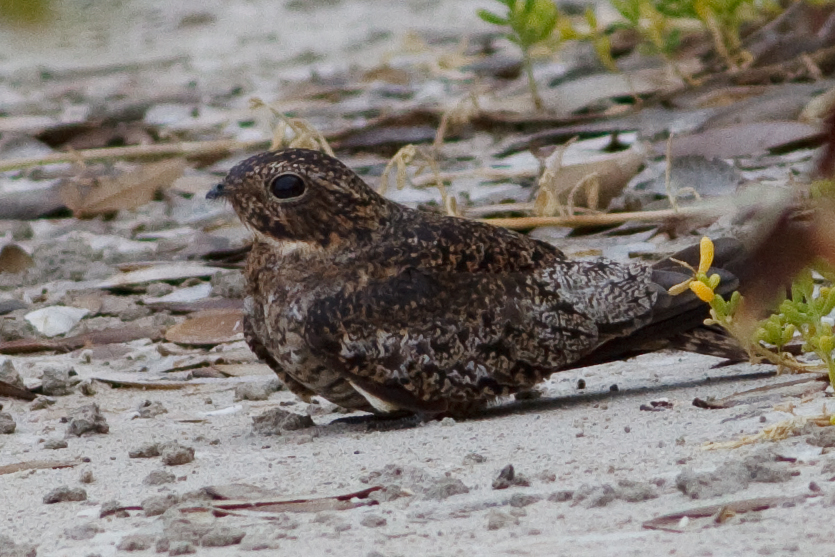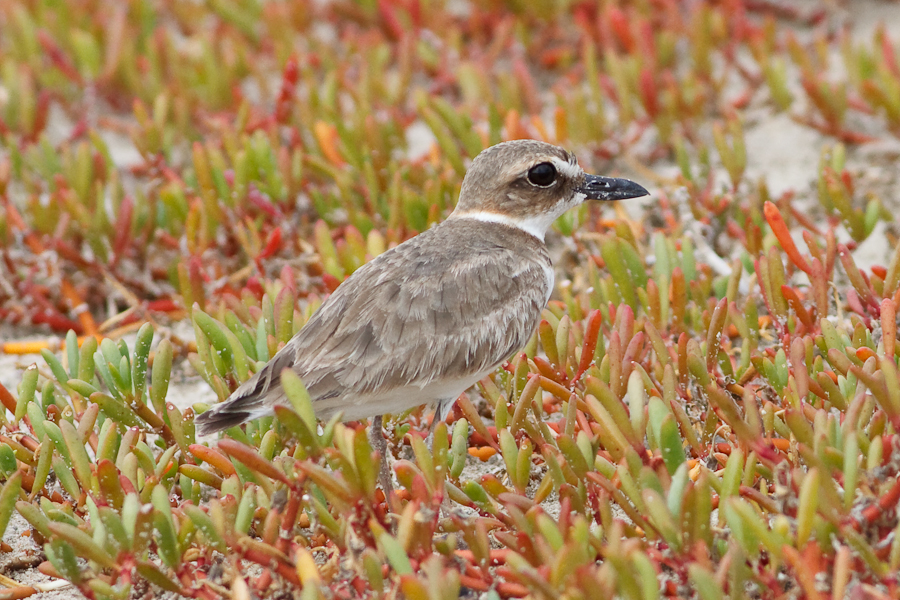#498-502 Back at the Copa
Today we spent most of the day at the hotel (plus one abortive, rained out trip to the allegedly dry forest). Early in the morning (6:30-8:30) I spent some time in an undeveloped area just east of the hotel with a lot of mud flats and it was jumping. In fact, I’d say it was the best birding of the trip so far. Across the road from the hotel I finally located a small flock of buzzy little brown jobs I’d been hearing for a couple of days. They weren’t anything I recognized, but after consulting the field guide I decided they were grassquits, but which ones? The female and immature Yellow-faced Grassquits look almost exactly like the immature Black-faced Grassquits. Fortunately I eventually spotted one male Yellow-faced Grassquit (though no photo) which resolved that. Or at least it did until I found two adult male Black-faced Grassquits:

Apparently it was a mixed flock so that’s #498 and #499. At least one of the grassquits was banded, though I couldn’t read the band. I later learned there’s been an active bird banding project in Bosque del Seco for a couple of decades now.
Moving on into the mudflats south of the road and east of the Restaurant San Jacinto, I found a host of shorebirds including Ruddy Turnstone, Black-bellied Plover, Semipalmated Plover, Black-necked Stilt, Spotted sandpiper, Least Sandpiper, Lesser Yellowlegs, and more. I also found my first Yellow Warbler of the trip, and shortly after three smallish terns flew over squawking an unfamiliar call. They had black bills and no obvious dark patches on the wings. Down here that could only be Sandwich Tern, #500. I was hoping I could find and photograph more of these later, but these were the only ones I saw. Terns and gulls were surprisingly uncommon on this trip for the week: just one Laughing Gull, these three Sandwich Terns, and two Royal terns at Caña Gorda the next day.
I continued on into the mudflats when I flushed a bird I hadn’t even thought of trying for because it’s just too damn hard to find: Antillean Nighthawk! #501. And not only did I get great looks as it flew around, it promptly circled back and landed right in front of me:

Wow. These are not easy to find and even harder to photograph. After cooperatively posing for several shots, it took off again. But that wasn’t all. On the way back I spotted an unusually large plover. At first I thought another Semipalmated Plover or maybe a Snow Plover but it was clearly two large and the pattern wasn’t right. Also the bill was too large. What could it be? Fortunately I had just heard about the county first Wilson’s Plover at Bolsa Chica, so I had Wilson’s Plover on the brain; and when I checked the field guide, there it was:

#502. Wilson’s Plover! I’ve missed several easy life birds since I left Irvine last year, so this one felt particularly sweet.
In about two early morning hours I had 26 species including 5 life birds:
- Brown Pelican
- Magnificent Frigatebird
- American Kestrel
- Black-bellied Plover
- Wilson’s Plover
- Semipalmated Plover
- Killdeer
- Black-necked Stilt
- Spotted Sandpiper
- Lesser Yellowlegs
- Ruddy Turnstone
- Least Sandpiper
- Sandwich Tern
- White-winged Dove
- Common Ground-Dove
- Antillean Nighthawk
- Puerto Rican Woodpecker
- Gray Kingbird
- Northern Mockingbird
- Pearly-eyed Thrasher
- Yellow Warbler
- Bananaquit
- Yellow-faced Grassquit
- Black-faced Grassquit
- Greater Antillean Grackle
- Venezuelan Troupial
